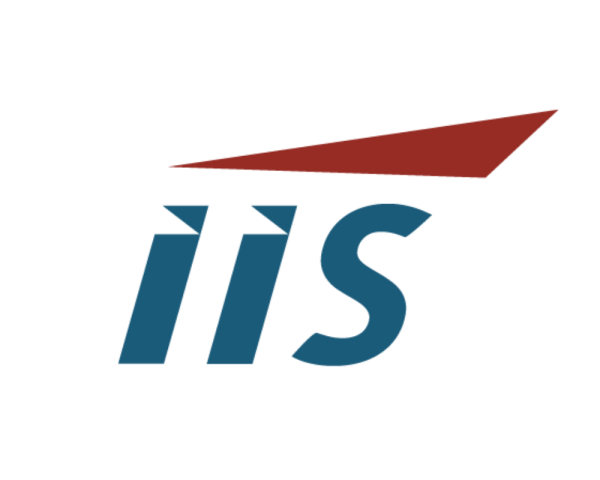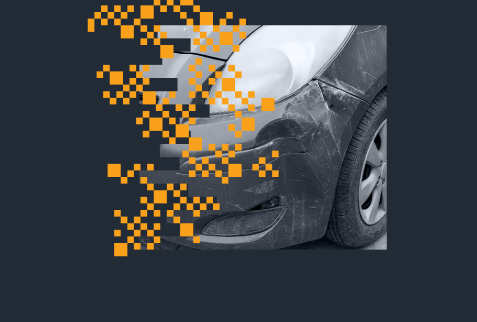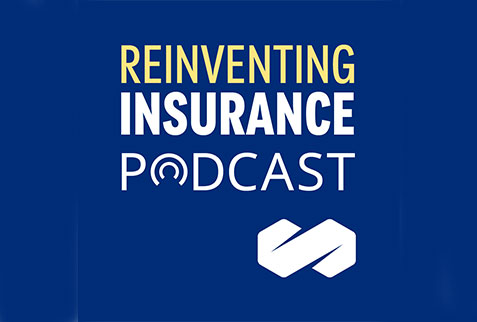Introduction: Transforming insurance sales
Transformation of sales in this digital era has come slower in the insurance industry than in other industries. Significant financial benefits brought by digital transformation remains to be seen. Online to Offline (“O2O”) distribution strategy enables insurance companies to transform traditional agency, and massively improves the agent’s productivity.
O2O here means leads generated online are assigned to insurance agents, who in turn close the sales over offline meetings. This distribution method combines the best of both world - data analytics in the online world and human touch in the offline world to build the trust which is most needed for life insurance products.
The success of the O2O distribution strategy has 4 key factors:
- A diversified lead partner ecosystem which is a source of quality leads.
- A lead management platform which funnels the leads to the insurance agents.
- Data insights for better customer experience and maximize conversions.
- A specialised O2O agency to nurture and close the leads.
There are many use cases of this model especially with different lead sourcing partner. One interesting use case is with virtual bank/digital bank. There are more virtual banks/digital banks around the world which have no physical presence, and only present in the digital world. The O2O model fits well and is a transformed way of bancassurance. Another use case is with insurtech and insurance companies can benefit from their capability to penetrate specific segment and to innovate on the customer journey, servicing and products. I believe the O2O distribution strategy will become another mainstream distribution channel in the near future.
O2O Four Major Pillars
1. O2O sourcing ecosystem for effective lead generation
Lead sourcing can come from many different sources: social media platform, different loyalty platform, online shops, forum, inforce customers from other lines of business (e.g. corporate business, general insurance business), companies from other industry. The best way is to develop a lead partner ecosystem, where it includes companies from different industries (not just those related to the financial industry, but also some retail brands). It can be win-win as the insurance offer can either be drawing more traffic to the company or the gift is product / voucher from that company. Especially as an insurance company, we have both life and general insurance to offer, and general insurance can be more easily be embedded into customer journey of our partner, while life insurance has more budget to support the campaign. On this lead partner ecosystem, we can analyze different customer footprints not just on financial aspects, but also lifestyles, family, personal traits, etc. All these information is valuable inputs into the lead generation platform which can ultimately improve the conversion ratio.
Next, the lead quantity and lead quality are almost like an art. How to strike a balance between lead quantity and lead quality can only be achieved through multiple tests. End-to-end conversion tracking and reasons of success and failure are important to evaluate for each campaign. All such analysis can drive to improvements in lead generation. For different customer segments and different types of insurance products, we have to do a lot of A/B testings to see which one works better. What is A/B testing? For example, we test two different advertisement messages on the same customer segment, or we test same advertisement message on different customer segments. Different customer segments can react very differently to different messages. We have a savings product, and our key message is breakeven as early as Year 6, and your policy value doubles every 10 years. We found the advertisement is not very effective, so we did one A/B testing, one message is on the product key edge on breakeven year and its return, and the other message is plan your retirement, with a visual with one man eating burger and one man drinking wines. The new advertisement on retirement message works much better. Of course, it is not true for every customer segment.
2. O2O lead management platform from lead to sales
Golden rule in contacting your customers is to contact him/her within the first few minutes he/she shows the interests. As a result, a lead management platform is almost essential for the O2O model. Leads with clear identification of the lead source, campaign details, customer digital footprint and customer contact information are instantly feed to different agents to follow up. Each agent is equipped with an app so they are instantly notified upon assignment. Any follow up action or notes by the agents can also be registered for each lead. Call reminders will automatically setup in case the agent has not called the customer.
One point to note on the platform design is to have the least manual tracking as possible by the agent. Otherwise, you will face the problems of either not enough data points, or fake data points. Try to automate the tracking as much as possible. In our case, our lead management system is connected to sales quotation system, premium payment gateway, and core administration system, hence, when the agents act on other platform, the activity will trigger lead status changes on the lead management system. Apart from the objective indicator to estimate the actual pipleines, we are also working on adding subjective indicator for the agents to rate each lead. All the high potential leads will then be closely followed up by the sales manager
With all the different agent activities collected on the platform, dashboard of conversions by campaigns, by agents, by customer segments, by products, by lead source, etc can be prepared.
3. O2O data insights for best customer experience and maximize conversion
With a diversed lead partner ecosystem and a lead management platform, you can gather a lot of data. All such data, such as campaign, customer, agent, product can help us to further optimize the results. Testings in changes in the assignment rule is much harder to achieve as there are so many factors affecting the conversion. Especially this time, it involves two humans in the process – the customer and the agent. It is expected to observe a longer time to really understand what assignment rule can drive a higher conversion. It will be easier to start with a general industry rule engine with Artificial Intelligence, and throughout learning of different agent behavior, slowly fine tune the rule engine to test if that improves the conversion results. This engine helps on the agent assignment, appointment timeslot setting (the best time to connect based on the customer behavior), product that may be of interest to different customer segments, scipts that can more easily resonance with the customer, etc. With these insights, when the agent calls the customer, he/she will be more prepared and also with a script which is more tailored to the customer (this can be based on customer’s digital footprints or predicted persona based on the Artificial Intelligence model). From the customer perspective, there is less drop off during the customer journey as the script will make the customer feeling more understood and as a result, easier to build the trust. All these not just result in higher conversion ratio, but also improve the customer experience on the first contact with our agents.
4. O2O agency management to optimize lead nurturing and conversion
Our agency model is a specialized one to only work on O2O leads assigned by the Company to the agents. The compensation model includes fixed monthly salary with variable allowances. We also set high standards when recruiting agents. They must be experienced with good productivity in the past. We have to ensure our leads are passed to experienced agents who can convert them. Then these agents are trained on the O2O model starting with first phone call with a customer. So far, most of our insurance agents are earning much more than they were in their previous insurance companies due to increased productivity. Our average productivity by agent is also a lot higher than the average in the industry.
When a lead is passed to an agent, the objective of the first call is to build trust with the customer and fact-find to understand customer needs. Usually, this nurturing time will vary tremendously by lead source and the lead management platform is a tool to ensure discipline in agency to keep nurturing potential leads.
One should not just rely solely on the agent to nurture the leads. Usually the agent will be tempted to only focus on leads that are ready-buyer and can be closed within short period of time. Lower quality leads will easily be put away with low attention. It is not that easy to have a constant flow of ready-buyer leads. Hence, how to ensure agent is giving enough attention to those lower quality leads, which require them to constantly invest time for nurturing such leads, becomes essential. The lead management system needs to be equipped with management capability such that agent behaviour can be closely monitored. Apart from monitoring, the Company can also help the agents to nurture the leads by different ways, for example: insurance education email, product promotions offer, offline events to ensure the customers remain engaged. Since we have also gathered different customer insights on our data collection, different nurturing tactics should be targeted to different customer segments.
Next is to sell an insurance policy. With all the previous efforts, conversion rates can be improved, and the case size of the policy can be maximized. With proper fact finding, the agent may be able to close more than 1 policy – either different products to serve the customer different insurance needs, or products to serve not just the customer needs, but also his family members’ needs. Some other steps which are important in this phase is referral. With the trust built and a good product, customer will be willing to introduce to their friends. Word of mouth is crucial and the conversion rate on such referees are high.
Any drop off along the lead progressing will be analysed to understand the pain points and look for improvements. Drop off reasons should be clearly marked by the agents, and customer survey should be considered to get customer feedbacks at different touchpoints.
O2O Three Key Enablers
1. Consistency in message across all customer touchpoints
There must be consistent message when the lead customer is moved from online to offline. Otherwise, it has no difference from a cold call. That’s why customer digital footpints before the lead is assigned to an agent is crucial information, and suggested scripts from the lead management platform tailored to the specific scenario is also helpful for a smooth transition from online to offline. For example, the first call scripts to a lead coming from a product push message, or a more lifestyle message related to retirement, or purely a bargain offer can differ a lot. As mentioned before, there will also be lead nurturing by the Company. Again, the message, tone and style should be consistent. All these subsequent touchpoints will create a consistent impression and help the agents in closing the sales.
2. Personalised and timely customer offer
Offering the right product at the right time to the right customer can be done through data analysis. Sometimes, just hearing from our customers is not enough. No one customer will tell you they need an iPhone until iPhone is developed and sold well. We have to study customer behaviour to understand their motives behind and then we can start the prediction. Lead generation is the same, blasting to everyone without any targeting is not going to be effective. We have tested premium voucher as one of the customer offers. Initially, we use this as one of the hook for lead generation, however, conversion is close to zero. Later, we tried at touchpoints which are later at the lead progressing journey, and the conversion is significantly improved.
3. Embedded Insurance
Embedded insurance is an excellent way for lead generations. Through embedded simple general insurance products along different user journey of our lead partner, we naturally gather customers of similar attributes or with common topics. The seamless experience brought by the embedded insurance can also help to strengthen the brand image of the insurer. The general insurance products help insurer to increase the touchpoints with the customers, which in turn increase the opportunities of further upsell of higher revenue life insurance products by the insurance agents under the O2O model.
With the different data insights collected, this can drive product innovation in the company, and the embedded insurance is the best way to get non-financial industries to be interested in collaborations with an insurance company. The data insights collected by an insurance company can also be beneficial for product development in those non-financial companies too.
Case Study
1. Virtual Banks
One of the use cases for the O2O distribution model is bancassurance with virtual banks.
Normally, in traditional banks, they have physical branches, and many customers walk into these physical branches for different bank facilities and there are sales staff in the bank branches to sell investment and insurance products. As the bank sales staff has all the customers’ wealth information, banking habits, etc, introducing the right product to the customer during the bank branch visit is one of the key success factors. Besides, customer’s trust in banks is also key for the success in bancassurance. With all the customer data, banks can also have detailed customer segmentation and conduct outbound calls to high potential customers.
The picture becomes very different when it comes to virtual banks. In Hong Kong, virtual banks cannot have physical branches, and as they are very new (the longest one has only passed its 2nd anniversary recently), they only have a small share of wallet for the deposits or loan products. Their customer view is not conclusive for the customer wealth or banking habits. Hence, bancassurance with virtual banks can no longer follow the traditional way. Either go fully digital and sell some simple insurance products or go O2O. When go O2O, customer analytics on the virtual bank customers become a combination of those under traditional banks, and social media platform. Financial data of the customer is not comprehensive enough to draw a conclusion, so it has to be combined with different behaviour statistics or to attract customers of different personas by different campaigns. For example, customer purchase behaviour, app browsing pattern, take-up of other bank products including loans or time deposits, etc. These customers can then be passed to the O2O funnel and be followed up by insurance agents. As both the virtual bank and insurance company are in the financial services industry, the digital engagement between the two companies can be even more integrated. The O2O process should not just end there when the online lead from a virtual bank is passed to an insurance agents. There should be constant re-engagement by the virtual bank at different stages of the lead progressing. For example, when the face-to-face meeting appointment is arranged, the appointment details and agent profile can be shown on the virtual bank app and appointment reminders can be pushed to customer. When the agent is not able to close the case despite multiple attempts, share of voice of relevant insurance advertisements / push notifications / relevant promotions can be increased for that particular customer, and a relevant customer offer can be pushed to him/her to create some urgency. The O2O model will be a more digitally integrated one.
The advantages of working with a virtual bank instead of other lead source partners are: 1. Inherit the trusts of clients on virtual bank to insurance sales; 2. Combine related bank products with similar insurance product (e.g. savings plan with time deposits, tax benefit annuity plans with tax loan).
There will also be new conflicts to manage. In traditional bancassurance, the sales staff are the bank employees and under direct control and management by the banks. So usually, the stress point is at the insurance product and product promotions. However, for the O2O model with virtual banks, the sales staff are the insurance agents in the insurance companies. The stress point is at the agent quality, agent conversion and agent management. Hence, a lead management platform with data analysis and pipeline & activity management capability is important. A long-term win-win strategic partnership with transparency between the two companies is key to make this work.
2. Insurtech
The other use case is partnership with Insurtech. By partnering with them, it helps insurance companies to excel in product innovations and customer experiences. We choose to start the journey in general insurance as the regulation is less heavy and there are more rooms to innovate. Each time, we identify a specific segment, create a community and then understand their concerned risks, and design a product to address that risk. For example, we identify runners as a group of customers and then we design a microinsurance for them that talk the same language, where the premium unit is per KM.
General insurance also has the benefits of increased touchpoints, especially at time of claims. Claims moment is one of the key moments that affect future life upsell. By partnering with Insurtech, we can also provide a more streamlined claim process. The whole experience starting from insurance purchase, activiating on-the-go insurance coverage with different gamifications, and claims experience give customers a fresh image of insurance.
The data that we collect through providing coverage for microinsurance (e.g. sports habits, health data) provides additional customer insights for any personalized insurance offering or simplified underwriting offer. We can then combine the right message at the right time to selected customers in the community. As customers in each community share common interests, it is easier for promotion message to talk the same language and pitch at the angles that suit these customers.
Conclusions
Traditionally, insurance sales have been dominated by agency, bancassurance and brokers. Digital channel has recently started but was still small in terms of market share. The Online to Offline distribution strategy has combined the edges of digital channel and agency and the use cases of this model are immense across retail shops, online forums, insurtechs and virtual banks. O2O model is an effective way that leverage the data insights to create new customer experience that results in high customer satisfaction and insurance sales.
This article was originally published by the International Insurance Society and RGA














